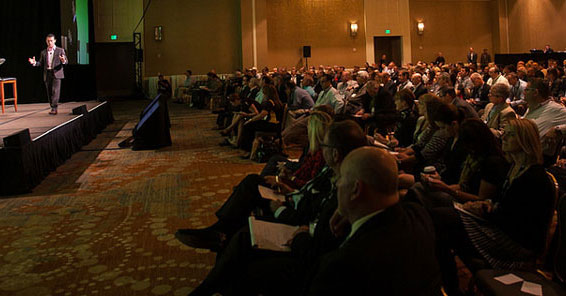What Franchise Brands Need to Know Before Opening an Airport Location

With nearly three million people traveling through airports in the U.S. every day, an airport may seem like the perfect place to open a location for a franchise brand. From a diverse customer base to the high foot traffic, this unique location provides an opportunity to introduce a brand to thousands of new faces daily. While operating at an airport has many benefits, there are also challenges that require thorough preparation and strategic planning.
Design and development
Franchise brands should be aware that designing and developing an airport site is inherently more complex than a traditional street-side location, which comes at a cost. There are several key drivers for these complications.
- Airport security: During the planning stage, it’s essential to account for Transportation Security Administration (TSA) guidelines. This includes ensuring that layout designs do not interfere with security checkpoints and allow for a seamless flow of travelers. Businesses that fail to comply with these regulations can experience significant delays or be denied a space at the airport.
- Limited vendors: The list of approved construction and design vendors for airports is limited due to regulatory requirements. With the smaller number of companies qualified to work on airport projects, it’s critical that you prepare for potentially higher costs and longer approval and/or construction timelines.
- Unique mechanical setup: Adapting to the existing infrastructure can be another challenge. Airports often require specialized mechanical setups which can include everything from HVAC systems to electric and plumbing, which differs from traditional restaurant locations. It’s critical to account for these factors when designing and developing an airport site.
- Time constraints: Airports place restrictions on when construction can occur to avoid disrupting travelers. These times are often limited to non-peak hours. This requires careful planning and a detailed strategy to open the business on time while meeting the requirements of the airport.
Real estate factors
In addition to examining the design and development aspects of opening an airport location, a franchise must also consider the unique real estate factors.
- Scarcity of available sites: With more franchise brands looking into non-traditional locations, especially airports, it’s critical to act quickly and diligently. Businesses must constantly monitor available sites and be prepared for intense competition to secure a retail space.
- High cost for development: Developing sites at an airport is a great opportunity to reach new customers, but it comes with a higher cost over traditional locations. These expenses are for specialized construction requirements, enhanced security measures, and compliance to strict regulations. Brands need to ensure they are financially stable prior to making this investment.
- Occupancy cost: Once the retail space is secured, the ongoing costs can seem daunting. While airports can serve as prime real estate for franchise brands, the retail leases could come with higher rental rates than traditional locations. These costs can put significant pressure on profit margins, especially for emerging brands that are just beginning to expand nationwide.
- Unique site configuration: Traditionally, brands have a certain number of layout options that franchisees can select from depending on their market and the size of their secured retail space. But when looking into airport sites, a franchise may need to create a new layout design that fits the unique site configurations that still allow for optimal functionality. Don’t shy away from developing custom solutions that fit the irregularly shaped layout of the airport site.
Operational factors
Airport restaurant locations require long hours of operation, which include three meal periods: breakfast, lunch, and dinner.
- Having a strong breakfast menu is required in most airport locations. Serving food that aligns with the time of day is essential for appealing to travelers.
- Brands must be ready to staff their locations for extended hours of operation and comply with unique badging requirements.
Overall, establishing an airport presence can be a complicated process, from dealing with issues such as site availability to development and occupancy costs and more. Successfully navigating these challenges requires market research, careful financial planning, and a deep understanding of airport operations and regulations. While these steps may seem daunting, it is well worth the effort to open an airport location and can take a brand to new heights in this competitive retail market.
Jeff Drake is the CEO of Protein Bar & Kitchen, a fast casual restaurant brand with locations in Salt Lake City International, Chicago’s O’Hare, and New York LaGuardia Airport’s Terminal C, with plans to open an additional restaurant in the Boise, Idaho airport in 2025.
Share this Feature
Recommended Reading:
| ADVERTISE | SPONSORED CONTENT |
STAY CONNECTED
Subscribe to our newsletters to stay informed on the hottest trends in Franchising.
FRANCHISE TOPICS
- Multi-Unit Franchising
- Get Started in Franchising
- Franchise Growth
- Franchise Operations
- Open New Units
- Franchise Leadership
- Franchise Marketing
- Technology
- Franchise Law
- Franchise Awards
- Franchise Rankings
- Franchise Trends
- Franchise Development
- Featured Franchise Stories
| ADVERTISE | SPONSORED CONTENT |








 The franchise listed above are not related to or endorsed by Franchise Update or Franchise Update Media Group. We are not engaged in, supporting, or endorsing any specific franchise, business opportunity, company or individual. No statement in this site is to be construed as a recommendation. We encourage prospective franchise buyers to perform extensive due diligence when considering a franchise opportunity.
The franchise listed above are not related to or endorsed by Franchise Update or Franchise Update Media Group. We are not engaged in, supporting, or endorsing any specific franchise, business opportunity, company or individual. No statement in this site is to be construed as a recommendation. We encourage prospective franchise buyers to perform extensive due diligence when considering a franchise opportunity.